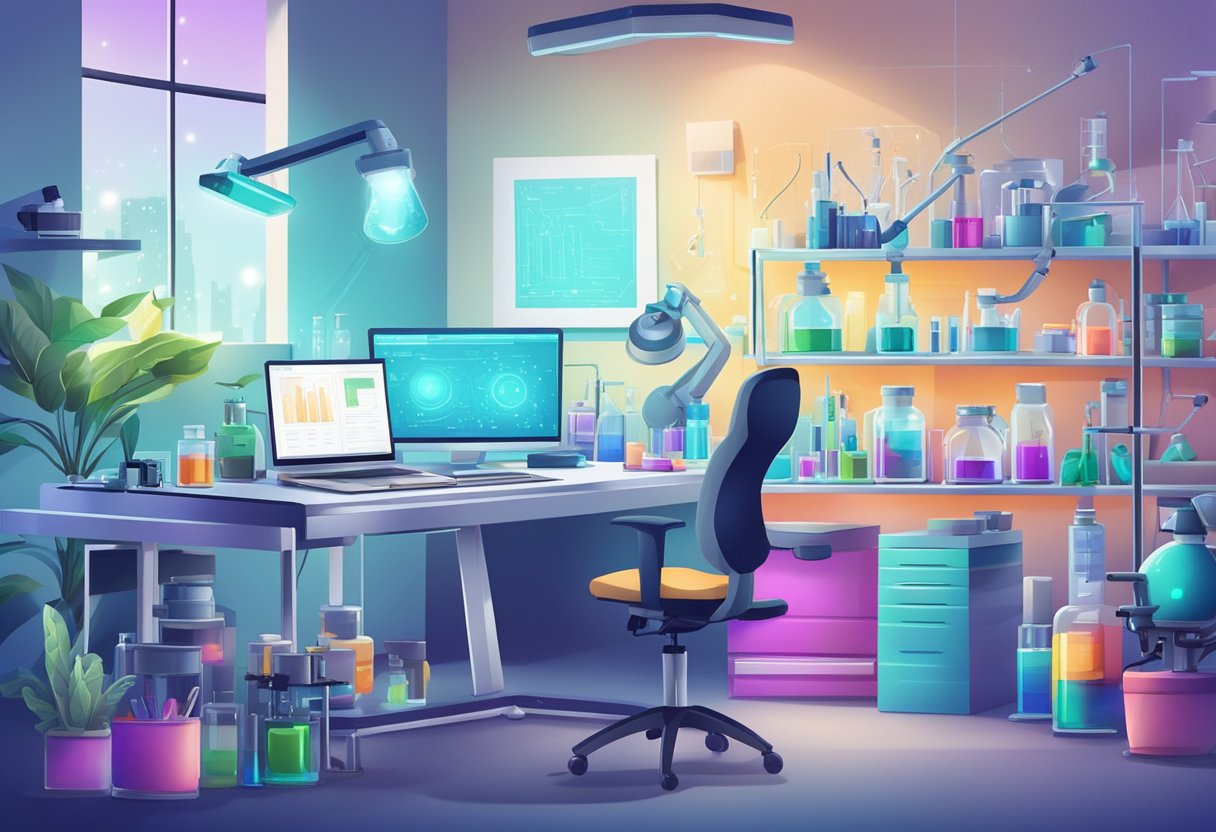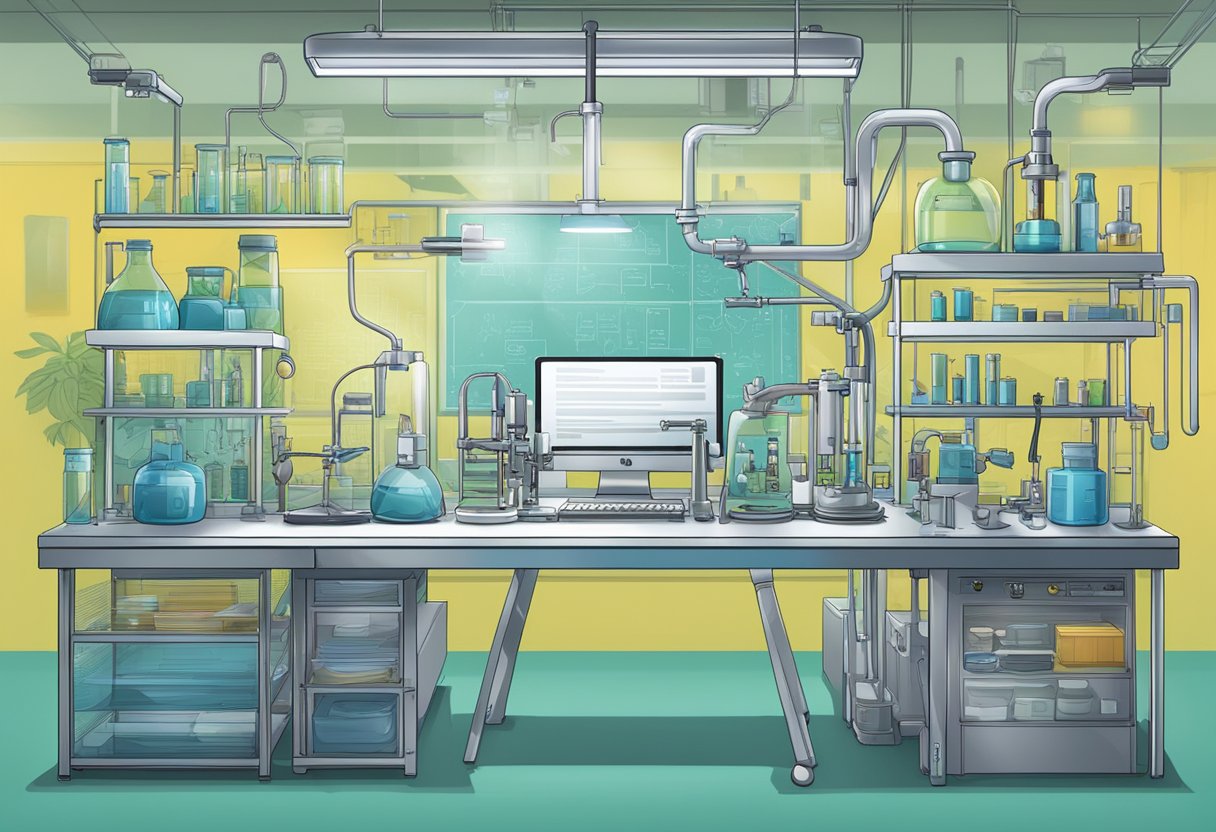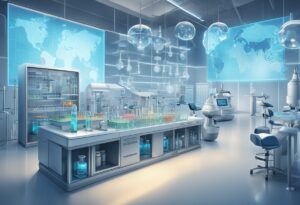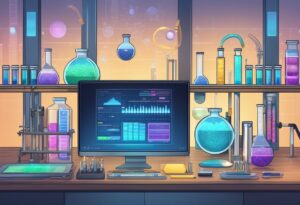Biohacking is a concept that has gained popularity in recent years as people look for ways to improve their energy and productivity levels.
Biohacking involves making changes to one’s lifestyle, diet, and environment to optimize physical and mental performance.
While some biohacks can be extreme and potentially dangerous, there are safe and effective ways to explore biohacking for energy and productivity improvements.
Understanding the principles of biohacking is essential before embarking on any biohacking journey.
Core biohacking strategies for energy and productivity include optimizing sleep, nutrition, exercise, and stress management.
Advanced biohacking techniques involve using supplements, nootropics, and technology to enhance cognitive function and physical performance.
When exploring biohacking for energy and productivity improvements, safety and ethics must be a top priority.
It is essential to consult with a healthcare professional before making any significant changes to one’s lifestyle or diet.
Additionally, it is crucial to approach biohacking with a critical mindset and to avoid making exaggerated or false claims about the potential benefits of certain biohacks.
Key Takeaways
- Biohacking involves making changes to one’s lifestyle, diet, and environment to optimize physical and mental performance.
- Core biohacking strategies for energy and productivity include optimizing sleep, nutrition, exercise, and stress management.
- When exploring biohacking for energy and productivity improvements, safety and ethics must be a top priority.
Understanding Biohacking

Defining Biohacking and Its Principles
Biohacking is a term that refers to the practice of using biology, technology, and self-experimentation to optimize one’s health and well-being.
It involves a range of activities that aim to improve physical and cognitive performance, boost energy levels, and enhance overall quality of life.
Biohacking is a form of DIY biology that emphasizes self-empowerment and control of one’s own biology.
At its core, biohacking is based on a set of principles that involve taking an active role in one’s own health and well-being. These principles include:
- Personalization: Biohacking is highly individualized and tailored to each person’s unique biology and needs.
- Experimentation: Biohacking involves a willingness to try new things and experiment with different approaches to optimize health and performance.
- Data-driven: Biohacking relies on data collection and analysis to track progress and make informed decisions about what works best for each individual.
- Continuous improvement: Biohacking involves a commitment to ongoing learning and refinement of techniques and strategies to achieve optimal health and performance.
The Intersection of Biology and DIY Culture
Biohacking is part of a larger trend towards DIY culture, which emphasizes self-sufficiency and self-empowerment.
DIY biology, in particular, involves the use of low-cost tools and techniques to explore and experiment with biological systems.
This approach allows individuals to take control of their own biology and explore the limits of what is possible.
Biohacking is also closely linked to the field of biology, which has seen rapid advances in recent years thanks to new technologies and techniques.
These advances have made it possible to explore and manipulate biological systems in ways that were previously impossible.
Core Biohacking Strategies for Energy and Productivity
Biohacking is a term used to describe the practice of optimizing one’s physical and mental performance through various lifestyle changes, including nutrition, exercise, sleep, and stress management.
By adopting a biohacking approach, individuals can explore different strategies to enhance their energy levels, focus, well-being, and overall performance.
Nutrition and Diet
One of the most important aspects of biohacking is nutrition. A healthy and balanced diet can provide the body with the necessary nutrients and energy to perform at its best.
To optimize energy and productivity, individuals should focus on consuming nutrient-dense foods that are rich in vitamins, minerals, and antioxidants.
Some of the best foods for energy and focus include:
- Leafy greens such as spinach and kale
- Fatty fish like salmon and tuna
- Nuts and seeds such as almonds and chia seeds
- Whole grains like quinoa and brown rice
- Fruits such as berries and apples
In addition to consuming healthy foods, individuals should also pay attention to their eating habits.
Eating smaller, more frequent meals throughout the day can help maintain energy levels and prevent crashes.
It’s also important to stay hydrated by drinking plenty of water and avoiding sugary drinks.
Physical Activity and Exercise
Regular physical activity is essential for maintaining energy and productivity. Exercise can help improve circulation, boost mood, and reduce stress levels.
To optimize the benefits of exercise, individuals should aim for at least 30 minutes of moderate-intensity activity per day.
This can include activities like:
- Walking or jogging
- Cycling
- Swimming
- Yoga or Pilates
Strength training exercises can also be beneficial for building muscle and increasing metabolism.
It’s important to find an exercise routine that is enjoyable and sustainable to maintain long-term benefits.
Sleep Optimization
Getting enough quality sleep is crucial for energy and productivity.
Sleep helps restore the body and mind, allowing individuals to wake up feeling refreshed and focused.
To optimize sleep, individuals should aim for 7-9 hours of sleep per night and establish a consistent sleep schedule.
Some tips for improving sleep quality include:
- Creating a relaxing bedtime routine
- Avoiding screens and bright lights before bed
- Keeping the bedroom cool and dark
- Using a comfortable mattress and pillows
Stress Management Techniques
Stress can have a negative impact on energy and productivity.
To manage stress, individuals can explore various relaxation techniques such as:
- Meditation or mindfulness
- Deep breathing exercises
- Yoga or stretching
- Journaling or expressive writing
Advanced Biohacking Techniques
Fasting and Intermittent Fasting
Fasting is a practice that has been around for centuries and has been used for various reasons, including religious and spiritual purposes.
However, in recent years, fasting has gained popularity as a biohacking technique that can improve energy and productivity.
Fasting involves abstaining from food for a certain period, and intermittent fasting involves limiting food intake to certain hours of the day.
Intermittent fasting has been shown to improve cognitive function, increase energy levels, and aid in weight loss. It has also been linked to a reduced risk of chronic diseases such as diabetes and heart disease.
Cognitive Enhancers and Nootropics
Nootropics are substances that are used to enhance cognitive function.
They include natural compounds such as caffeine and omega-3 fatty acids, as well as synthetic compounds such as modafinil and racetams.
While some nootropics have been shown to improve cognitive function, others have not been extensively studied, and their long-term effects are unknown.
It is important to research and consult with a healthcare professional before using any nootropic.
Temperature Modulation Practices
Temperature modulation practices such as ice baths, cryotherapy, and cold exposure have gained popularity as biohacking techniques that can improve energy and productivity.
These practices involve exposing the body to cold temperatures, which can have a range of benefits, including reducing inflammation, improving circulation, and increasing energy levels.
However, these practices can be dangerous if not done properly.
It is recommended to start with short exposure times and gradually increase exposure over time.
It is also important to consult with a healthcare professional before attempting any temperature modulation practices.
Technology and Devices in Biohacking
Biohacking is a rapidly growing field that combines technology and self-experimentation to optimize health and performance.
Wearable technology and tracking, self-experimentation and testing, and emerging biohacking gadgets are all key components of the biohacking process.
Wearable Technology and Tracking
Wearable technology, such as Fitbit and Oura Ring, is a popular tool for biohackers to track their health and performance.
These devices can monitor sleep, heart rate, and physical activity, providing valuable data that can be used to optimize performance.
Wearable technology can also be used to track food intake and monitor other health metrics, such as blood pressure and glucose levels.
These devices can help biohackers identify patterns and make informed decisions about their health and wellness.
Self-Experimentation and Testing
Self-experimentation and testing are essential components of biohacking.
Biohackers often experiment with different diets, supplements, and lifestyle changes to optimize their health and performance.
Testing is also an important part of the biohacking process.
Biohackers may use blood tests, microbiome tests, and other diagnostic tools to monitor their health and identify areas that need improvement.
Emerging Biohacking Gadgets
Emerging biohacking gadgets, such as grinders and microchips, are pushing the boundaries of what is possible in the field of biohacking.
These devices can be used to enhance cognitive function, improve physical performance, and even extend lifespan.
Grinders, for example, are individuals who implant technology into their bodies to enhance their abilities. Microchips can be used to monitor health metrics and even unlock doors with a wave of the hand.
Safety and Ethics in Biohacking

Biohacking is the practice of using science and technology to improve one’s health, performance, and overall well-being.
While biohacking can be an effective way to improve energy and productivity, it is important to approach it safely and ethically.
Assessing Risks and Benefits
Before starting any biohacking practice, it is important to assess the risks and benefits involved.
Some common biohacking practices, such as getting enough sleep, eating a healthy diet, and staying physically active, are generally considered safe and beneficial.
However, other practices, such as taking supplements or experimenting with new technologies, may carry more risks.
It is important to research each practice thoroughly and consult with a healthcare professional before starting.
Ethical Considerations and Community Standards
Biohacking also raises ethical considerations and community standards.
Some biohacking practices, such as using CRISPR gene editing technology, raise concerns about the potential for unintended consequences and the need for responsible use.
Additionally, biohacking can be a solitary practice, but it is important to consider the impact of one’s actions on the wider community.
It is important to follow established community standards and ethical guidelines to ensure that biohacking practices are safe, responsible, and beneficial for everyone involved.


